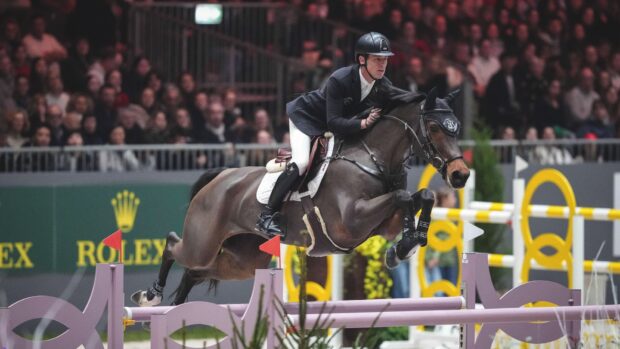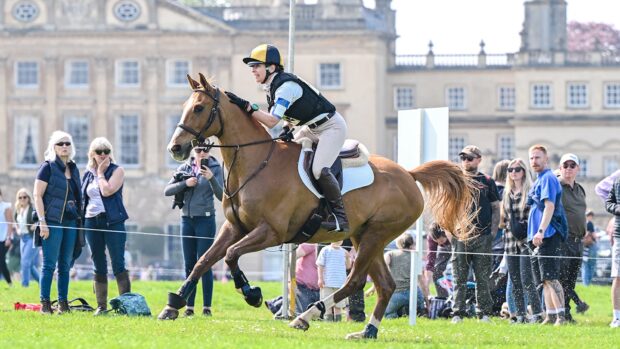The way horses respond to stressful situations and the lasting impact of a bad experience in early life have been highlighted by experts, who also have advice on how owners can help horses with problems triggered by traumatic experiences.
Neuroscientist Emma Lethbridge and equine behaviour consultant Justine Harrison discussed how to recognise signs of trauma in horses, and the impact it can have on their mental and physical state, at a World Horse Welfare-organised webinar (13 March).
The pair stressed the importance of prioritising the “five domains”, which include the freedom to behave normally as well as freedom from pain, hunger, thirst and fear, as the essential starting point. They also urged equestrians to seek professional help “as soon as possible” when dealing with horses who have faced trauma, and pointed out the lasting damage that poor weaning practices can have.
“I think as part of the equestrian world, one of the most important things we can do is be aware of trauma and be trauma-informed,” said Dr Lethbridge. “A lot of horses do experience trauma, and a lot of behaviours we often see in them are due to them having been through these incredibly stressful events.”
Dr Lethbridge explained the three main categories of trauma. These are acute, which would be one very stressful event such as an accident, chronic, such as abuse or neglect over time, and complex, a combination of acute and chronic stressful events.
She added that trauma affects emotional and cognitive processes in a horse’s brain, which can then manifest in behaviour and even physiological changes. For example, when high levels of the stress hormone cortisol are present for long periods of time, this can affect a horse’s metabolism and immune system.
“Common things you may see in a horse that has undergone trauma are an increased startle response – the horse could be restless, spooky, anxious or hypervigilant,” she said.
“They can become depressed, withdrawn or helpless and show anhedonia-like behaviour, the lack of enjoyment of anything. A common one is aggression or irritable behaviour. Due to sensitisation to the fear systems, you can get very large responses to triggering stimuli.
“You can get generalisation of triggers – if a horse has had a really bad experience with a horse lorry, for example, the horse will be looking to avoid anything that reminds them of that.”
Other signs included the dysfunction of fear extinction, the unlearning of fear, which Dr Lethbridge notes can be a “very up-and-down process” in horses. She also nodded to sleep disturbances, appetite changes, social relationship disturbances, and increase or development of repetitive behaviours such as cribbing or weaving.
“Not every horse will show all these symptoms and if you have two horses who go through the same thing, even they won’t show the same symptoms because it will be informed by the horse’s nature, genes and nurture,” said Dr Lethbridge.
“The first thing we need to do is activate that stress response as little as possible. One of the ways [to do that], is by ensuring we have really excellent husbandry and welfare,” she said, referring to the five domains.
“Feeling safe is something that comes from inside the horse and not something we can put on them. So as much as we think their environment is lovely, if they don’t feel safe, it doesn’t matter.”
Equestrians were urged to be “vigilant” and understand the triggers for their horses. Dr Lethbridge also gave examples of systemic desensitisation and counter-conditioning work. These involve breaking down triggers to their “smallest tolerable level”, and aiming to change a horse’s association with a trigger from fear to pleasure.
Ms Harrison added: “As a rule of thumb, the longer these triggers have been going on, the harder the issue might be to resolve.
“I would also really urge owners to learn more about horse behaviour and to start recognising the earlier signs of stress. I think sadly, too often horses will start to voice that they’re struggling with what they’re being asked, and the signs are dismissed – so we see the behaviour escalate, and the problem gets bigger and bigger.
“The sooner they can address it, the better. But I would always say the first thing to do is to contact your vet and just make sure that there’s nothing physical going on.”
Both speakers voiced the “paramount” need for experiences around weaning to be “as stress-free as possible”.
“There is an awful lot of research now within animal-based and human-based neuroscience, which shows that if you undergo aversive events in those formative years, that can really have a quite great impact on your neurological structure,” said Dr Lethbridge, adding that these changes are “magnified” if they occur before the brain is fully formed.
“It is really important that all weaning is done in as stress-free a way as possible, and when it is age-appropriate.”
You might also be interested in:

Subscribe to Horse & Hound magazine today – and enjoy unlimited website access all year round
Horse & Hound magazine, out every Thursday, is packed with all the latest news and reports, as well as interviews, specials, nostalgia, vet and training advice. Find how you can enjoy the magazine delivered to your door every week, plus options to upgrade your subscription to access our online service that brings you breaking news and reports as well as other benefits.




